Modules
Iber is a more than a two-dimensional hydrodynamic muerical tool for the simulation of free surface water flows. In addition to the hydrodynamic module, Iber has the following fully coupled additional calculation modules:
- Turbulence
- Sediment Transport
- Water Quality
- Hydrological Processes
- Habitat
- Soil Erosion
- Urban Drainage
- Wood Transport
Iber also explores the performance of the hydrodynamic module for non-Newtonian shallow flows. This module works apart from the rest since it is oriented to simulate no-water flows.
- Non-Newtonian flows

Hydrodynamics
The hydrodynamic module solves the two-dimensional depth-averaged Shallow Water Equations (SWE), also known as the 2D Saint Venant equations.
These equations assume the hypotheses of hydrostatic pressure distribution and uniform velocity over the water depth. The assumption of hydrostatic pressure is satisfied in rivers as well as in tidal currents in non-stratified estuaries. The hypothesis of uniform velocity distribution usually complies in rivers and estuaries, provided that there are no relevant stratification processes due to differences in salinity, temperature or wind.
Related publications
- Bladé, E., Cea, L., Corestein, G., Escolano, E., Puertas, J., Vázquez-Cendón, E., Dolz, J., Coll, A., 2014. Iber: herramienta de simulación numérica del flujo en ríos. Revista Internacional de Métodos Numéricos para Cálculo y Diseño en Ingeniería, Volume 30, Issue 1, 2014, Pages 1-10, ISSN 0213-1315, DOI: 10.1016/j.rimni.2012.07.004

The hydrodynamic module of Iber can consider the following processes:
- Unsteady subcritical and supercritical flow computation
- Generation of unsteady hydraulic jumps
- Bed friction computed with Manning's formula
- Unsteady flood fronts
- Turbulent stresses calculated with different turbulence models
- Bed evolution due to Sediment Transport
- Different open boundary conditions: hydrograph, tidal level, weir, stage-flow hydrograph
- Wall-type boundary condition: free slip, wall friction logarithmic law
- Internal conditions: bridge, weir, sluice gate, culvert...
- Dam breach formation
- Hydrological processess (rain, infiltration...)
- Free surface wind friction computed with van Dorn's formulation
- Tools to calculate the flood risk zones in accordance with the Regulations on Public Water Supply
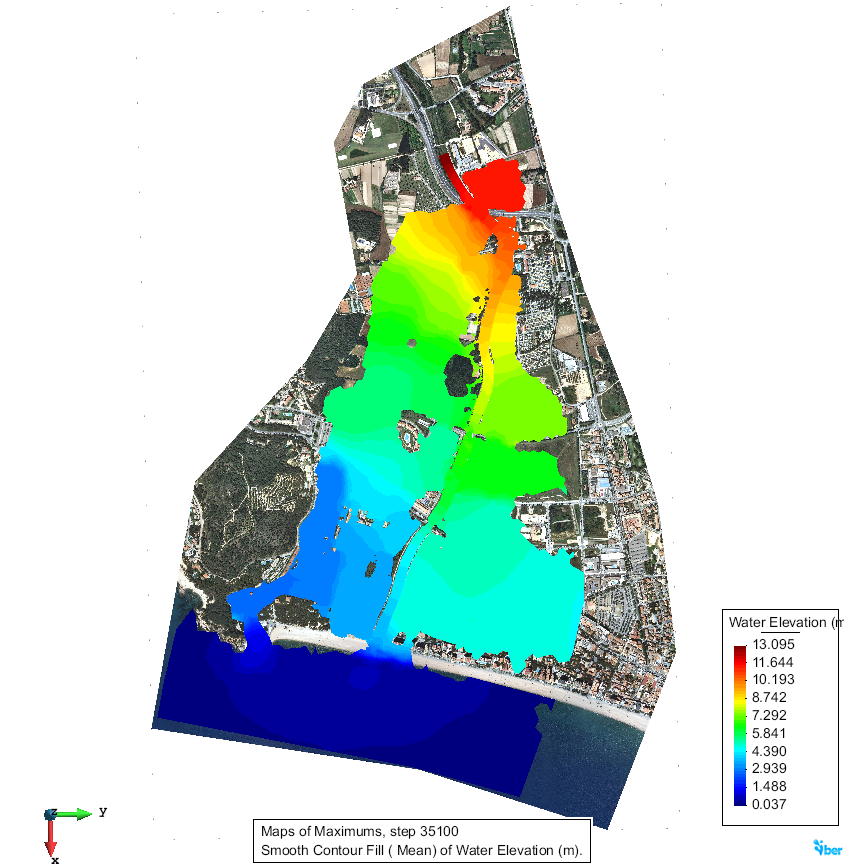
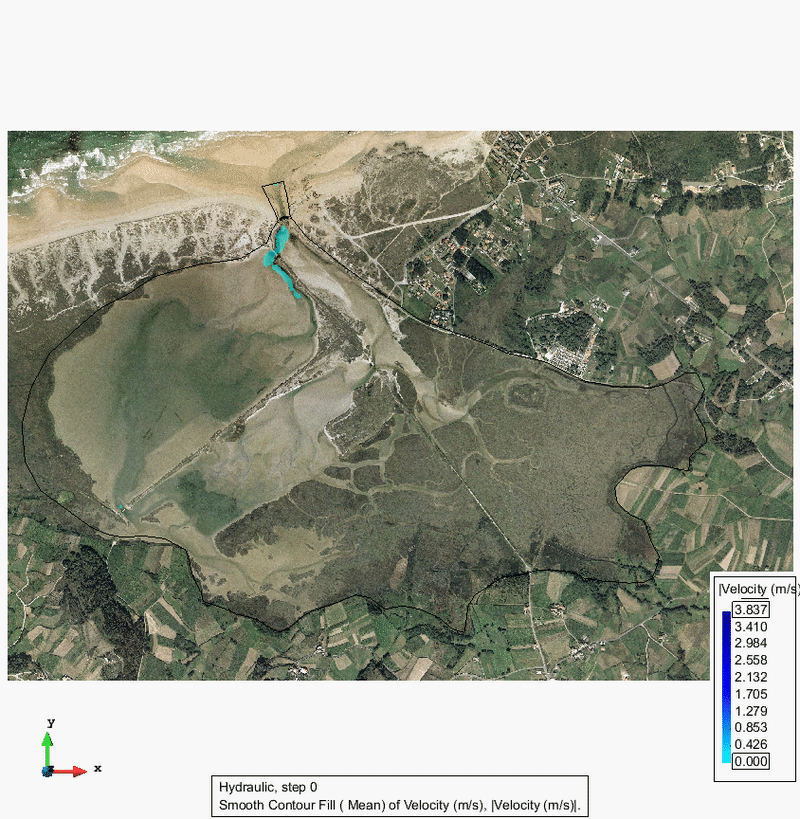
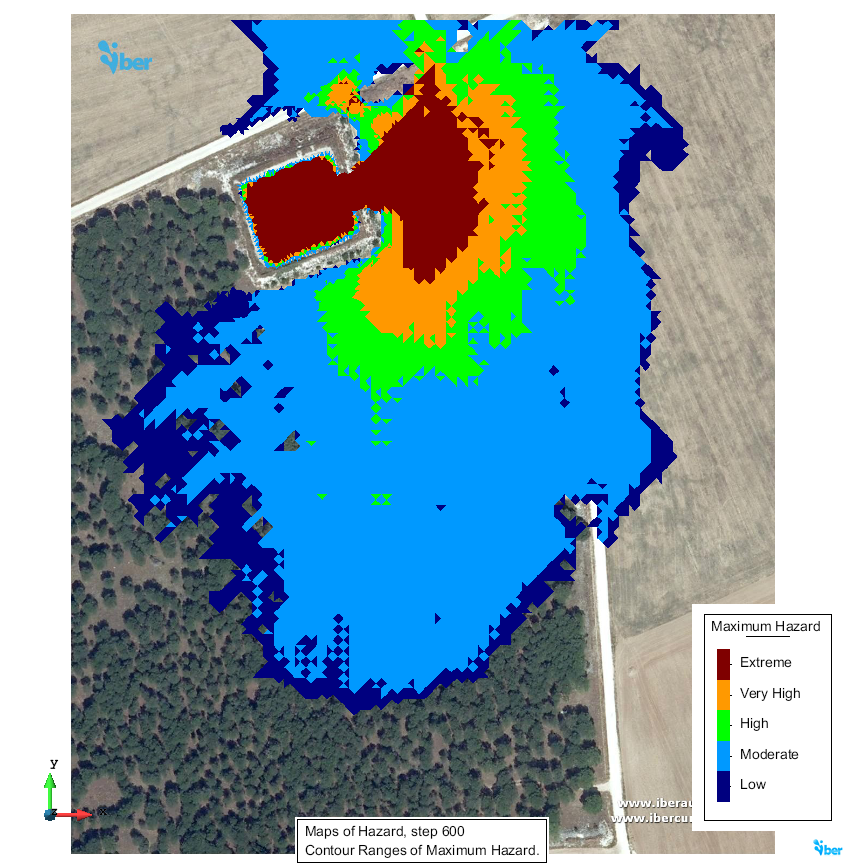
Turbulence
Iber incorporates several depth-averaged Boussinesq-type turbulence models to calculate the turbulent shear stresses. The following depth-averaged turbulence models for shallow water flows are included (Cea et al., 2007):
- Constant turbulent viscosity
- Parabolic model
- Mixing-length model
- K-ε model of Rastogi and Rodi
The user must decide which turbulence model to use according to the characteristics of the flow.
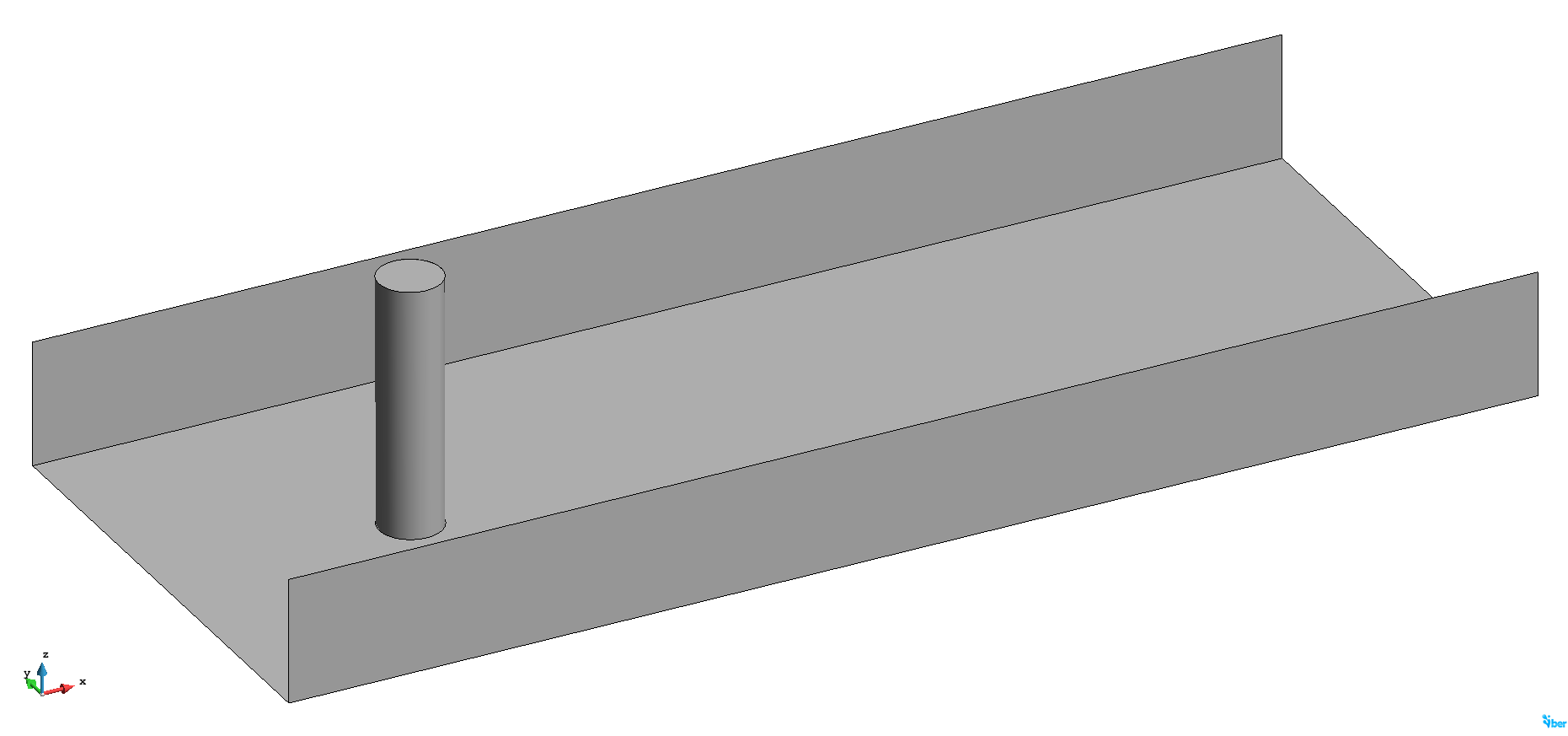
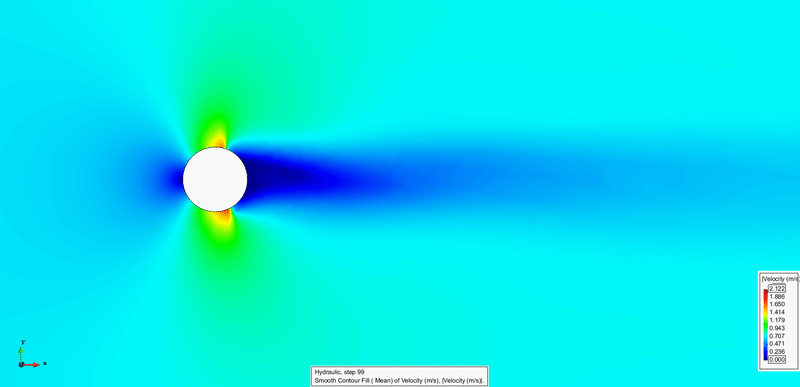
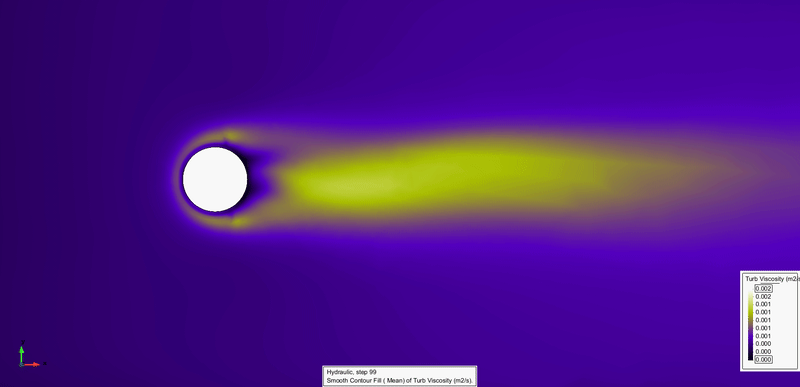
No turbulence
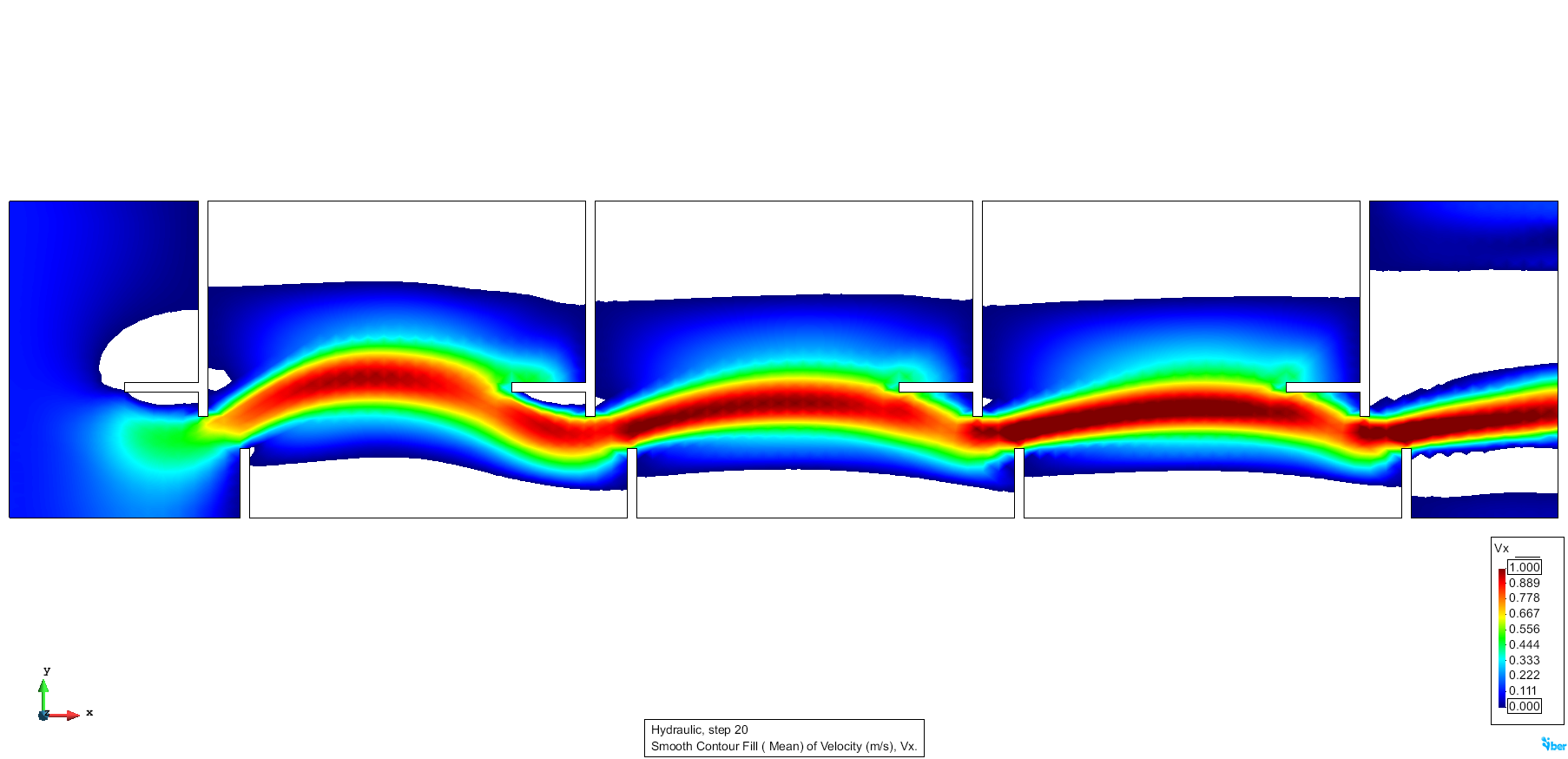
Mixing length
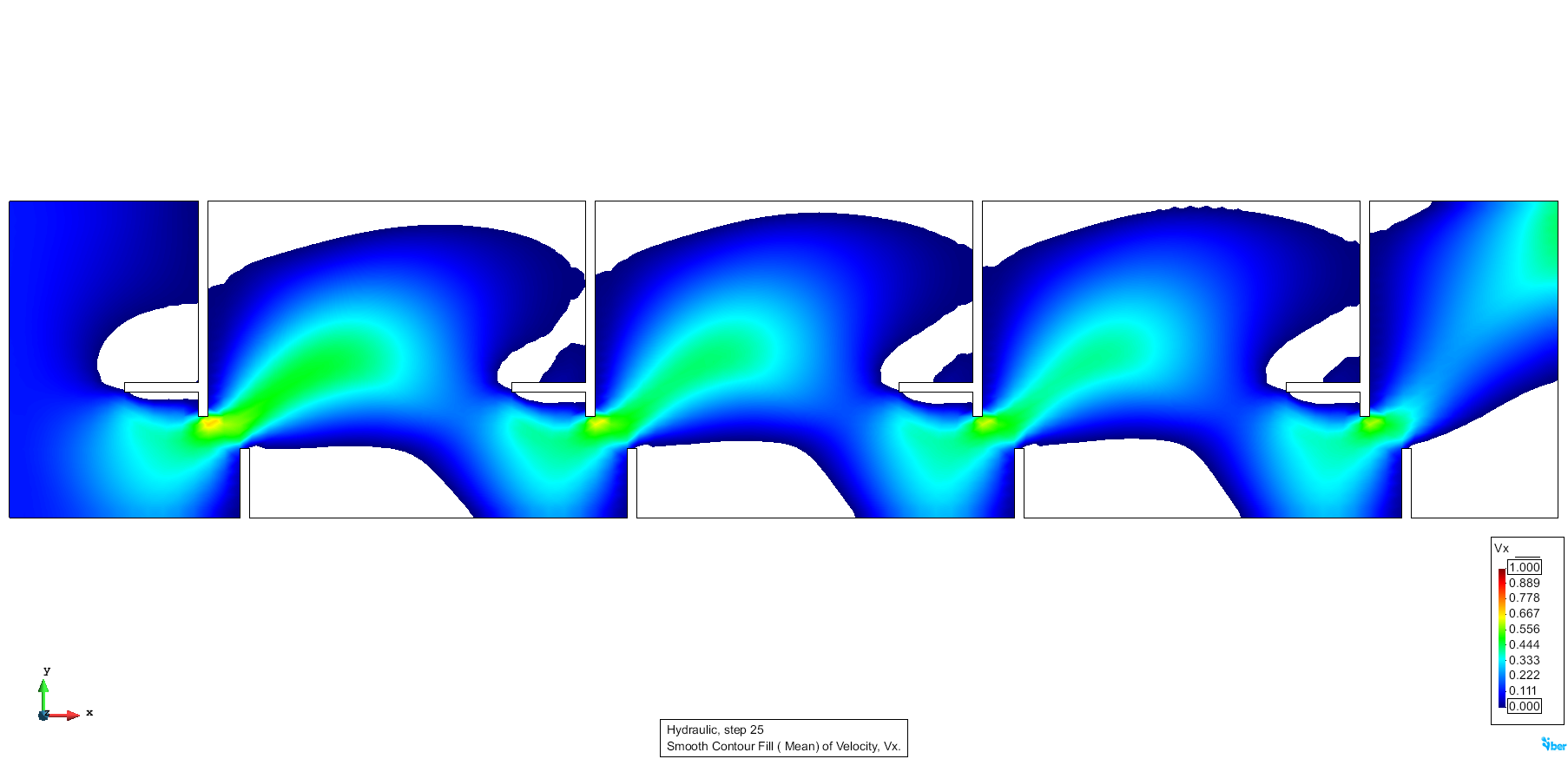
k-eps
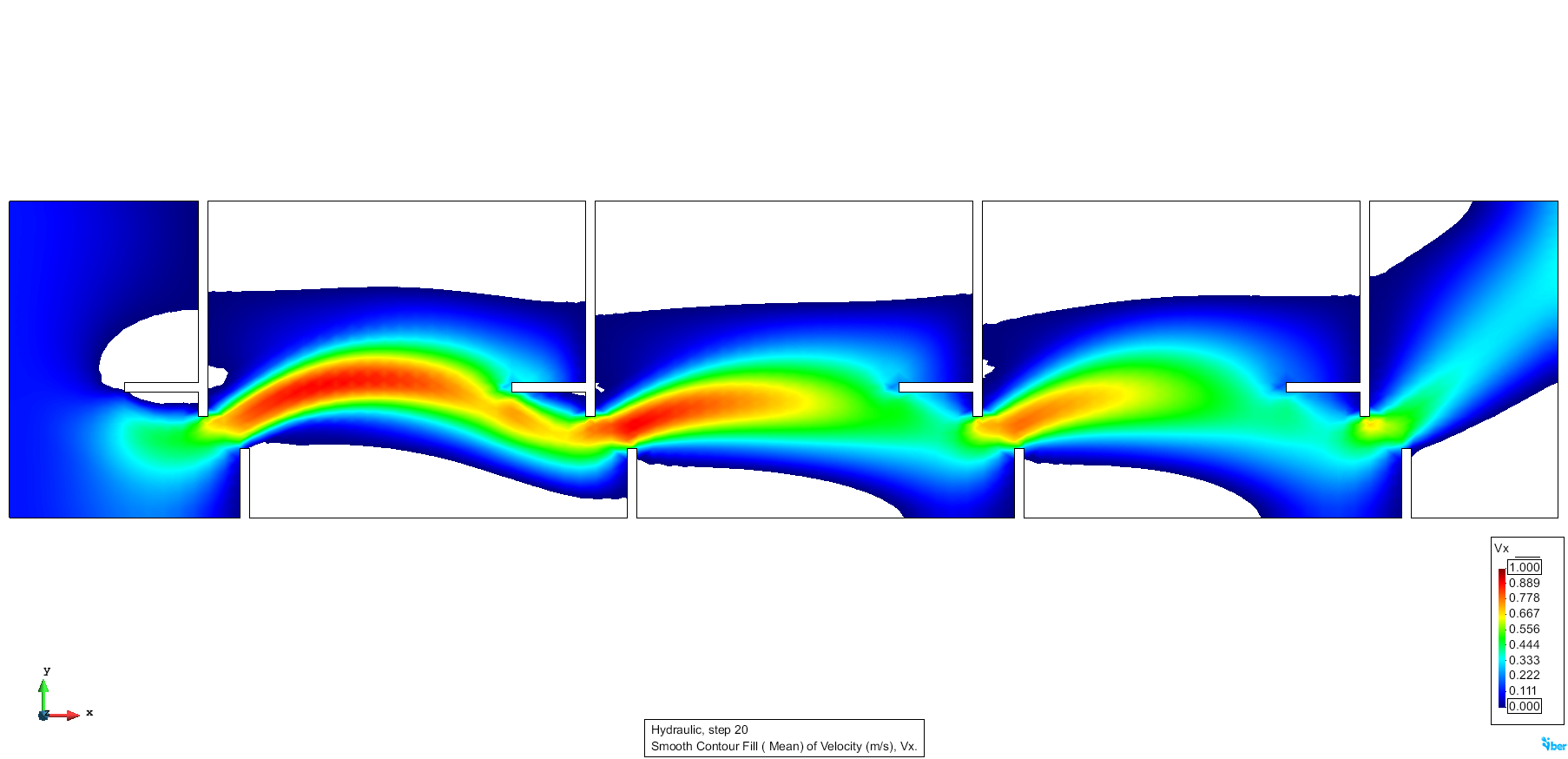
Sediment Transport
The sediment transport module solves the 2D Exner equation in order to compute the bed elevation evolution due to sedimentation and erosion processes, accounting for both bed load and suspended load.
The current version of Iber works only with uniform or quasi-uniform sediment granulometries, in which the grain size is characterized by its median diameter. Following versions of the model will implement specific formulations for sediment mixtures with non-uniform granulometry.
Bed load
The main features of the bed load sediment transport module are the following:
- Critical Shields stress for initial sediment motion
- Bed load formulations
- Wong and Parker (correction of Meyer-Peter and Müller formula)
- van Rijn
- Engelund - Fredsoe
- User defined relation
- Engelund - Hansen
- Bed slope correction for bed load transport (magnitude and direction)
- Rock layer position for non-erodible condition
Suspended load
The suspended transport is calculated by solving the depth-averaged convection-diffusion equation for the sediment concentration, including a sedimentation / erosion term which models the exchange of sediment between the bed and suspended load. The main features of this module are the following:
- Turbulent diffusion
- Term of deposition / resuspension
- Equilibrium suspended concentration computed from the formulations
- van Rijn
- Smith - McLean
- Ariathurai
- Calculation of sedimentation velocity with the formulation of Van Rijn
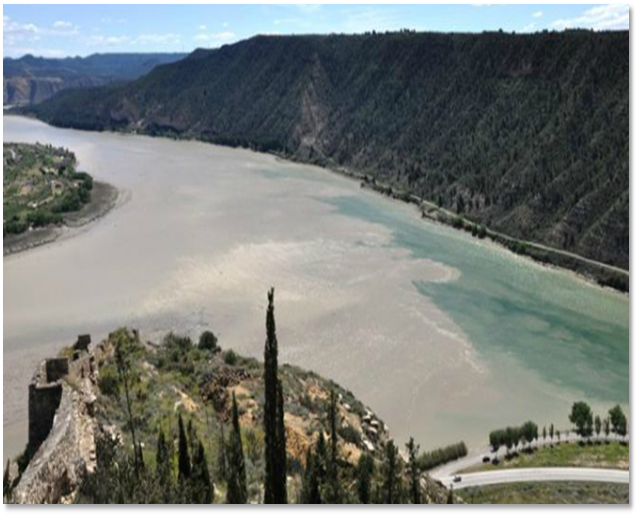
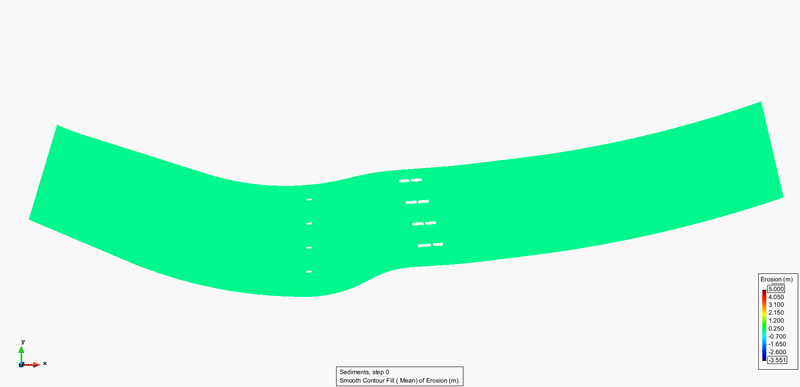
Water Quality
Iber includes a Water Quality module (IberWQ) which computes the spatial and temporal evolution of several species including:
- Escherichia Coli
- Dissolved Oxygen
- Carbonaceous Biochemical Oxygen Demand
- Organic Nitrogen
- Ammoniacal Nitrogen
- Nitrites/Nitrates Nitrogen
- Temperature
- Salinity
A 2D depth-averaged transport equation is solved for each species, including biochemical transformations to model their mutual interaction. Wave forcing and non-isotropic dispersion of pollutants due to wave action, which might be relevant processes in coastal areas, can be computed from an external wave field introduced as input data by the user.
Since the transport equations solved are 2D, they do not account for stratification processes nor for 3D flow effects and therefore, the water quality model is only applicable to far-field computations. The results deteriorate when applied to stratified flows in which the concentrations and velocity fields are not uniform over the water depth.
Related publications
- Cea, L., Bermudez, M., Puertas, J., Bladé, E., Corestein, G., Escolano, E., Conde, A., Bockelmann-Evans, B., Ahmadian, R., 2016. IberWQ: new simulation tool for 2D water quality modelling in rivers and shallow estuaries. Journal of Hydroinformatics 18, 816–830. DOI: 10.2166/hydro.2016.235

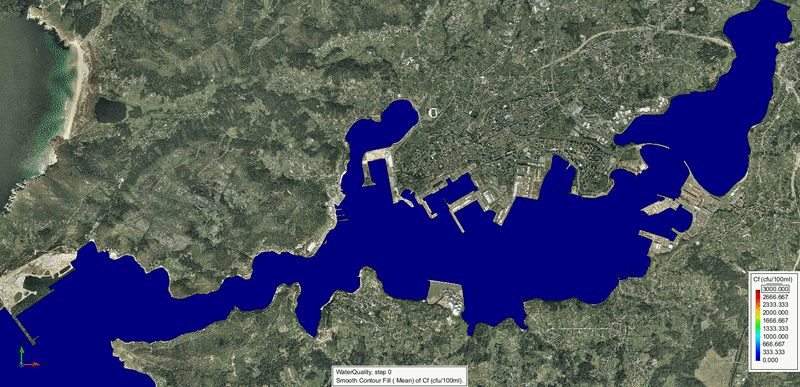
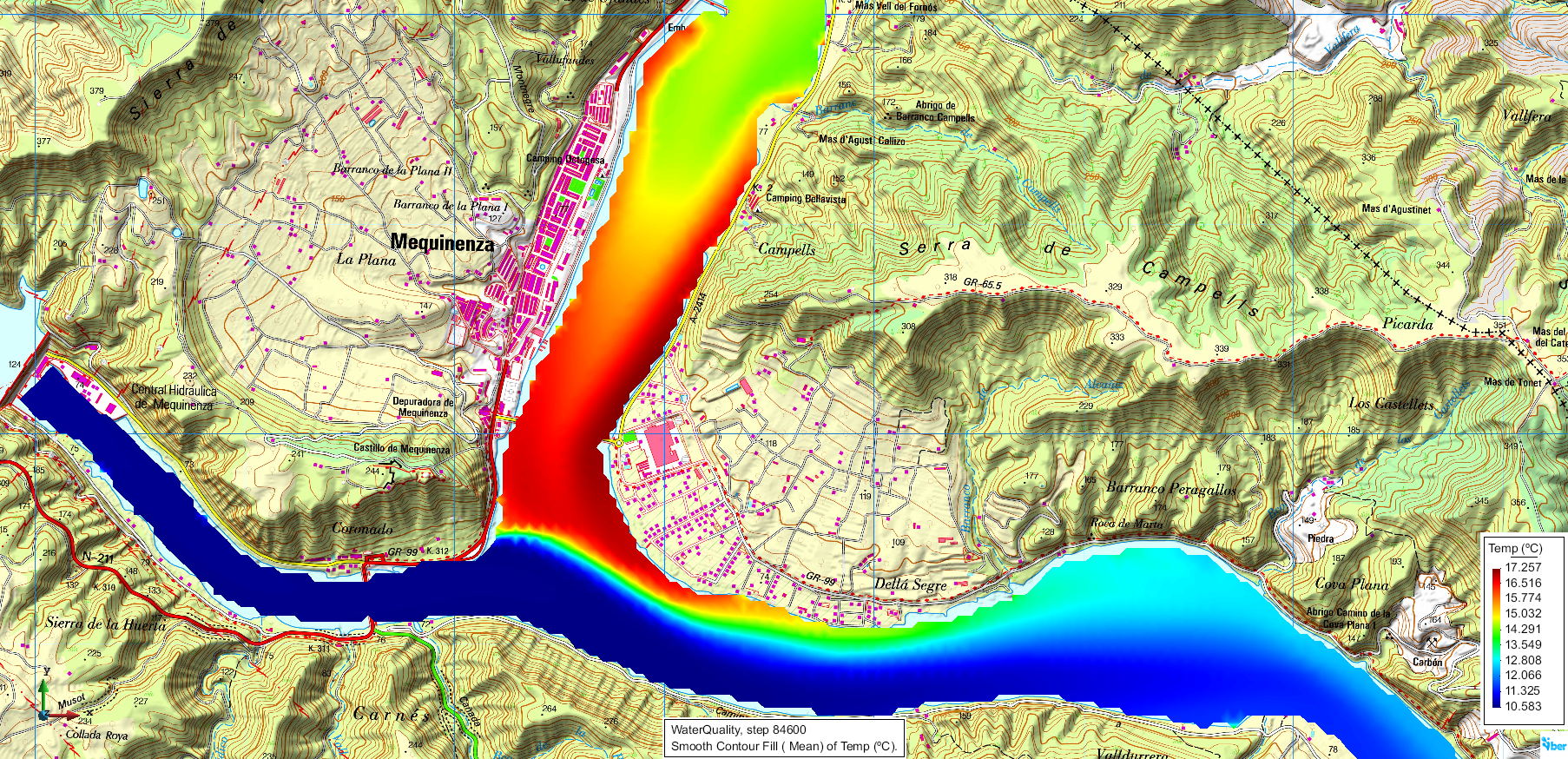
Hydrological processes
Iber includes some features which enable the computation of rainfall runoff transformation and therefore, make possible to use Iber as a distributed hydrological model based on the 2D shallow water equations.
These features include:
- Definition of rainfall fields from rain gauges or from raster files
- Definition of rainfall losses with different infiltration models, including Green-Ampt, Horton and constant infiltration
- A specific numerical scheme for hydrological applications (DHD scheme)
- Utilities to smooth bad conditioned Digital Terrain Models
The present version of Iber does not include a groundwater flow module and therefore, the base flow component is not consider in the model. This limits its applicability as an hydrological model to short and intense rainfall events in which the contribution of the base flow to the total discharge is less relevant than the surface flow contribution.
Related publications
- Cea, L., Bladé, E., 2015. A simple and efficient unstructured finite volume scheme for solving the shallow water equations in overland flow applications. Water Resources Research, 51, 5464-5486. DOI: 10.1002/2014WR016547

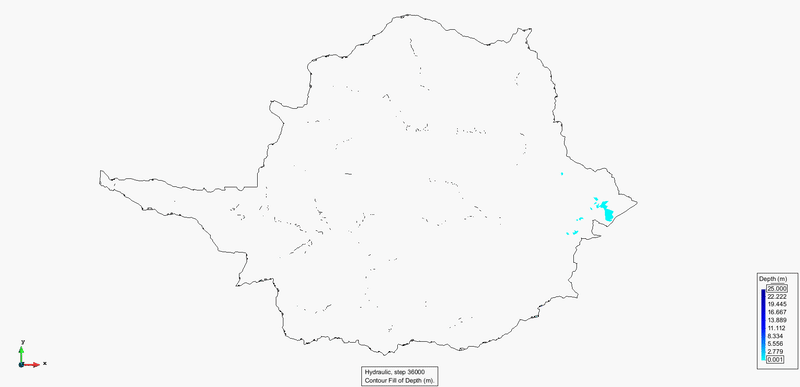
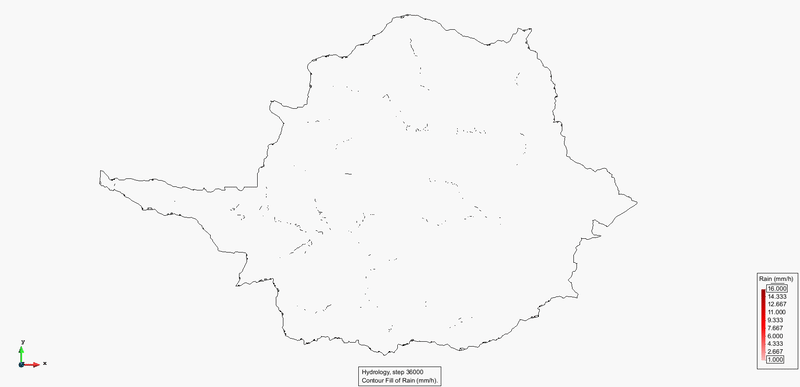
Habitat
Iber has been enhanced as a habitat model by adding specific tools into pre- and post-process, becoming into a suitable software for eco-hydraulics.
These features include:
- Definition of several suitability curves for fishes, including user-defined
- Assessment of three different suitability properties
- Specific tool for Weighted Usable Area (WUA)
This new tool can useful for decision making of water resources management, in general, and to improve the current state of the rivers, in particular, aiming to promote strategies that promote environmental conservation in rivers, enhancing all ecological and biological aspects.
Related publications
- Sanz-Ramos, M., Bladé, E., Palau, A., Vericat, D., Fuertes-Ramos, A., 2019. IberHABITAT: evaluación de la Idoneidad del Hábitat Físico y del Hábitat Potencial Útil para peces. Aplicación en el río Eume. Ribagua, 6:2, 158-167. DOI: 10.1080/23863781.2019.1664273

- Sanz-Ramos, M., López-Gómez, D., Bladé, E., Dehghan-Souraki, D., 2023. A CUDA Fortran GPU-parallelised hydrodynamic tool for high-resolution and long-term eco-hydraulic modelling. Environmental Modelling and Software, 105628. DOI: 10.1016/j.envsoft.2023.105628

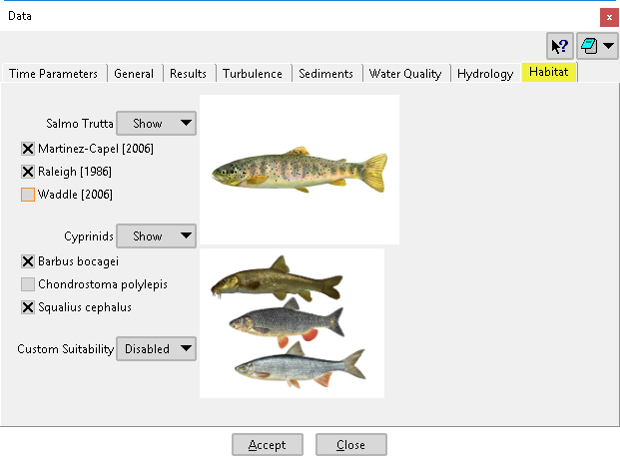
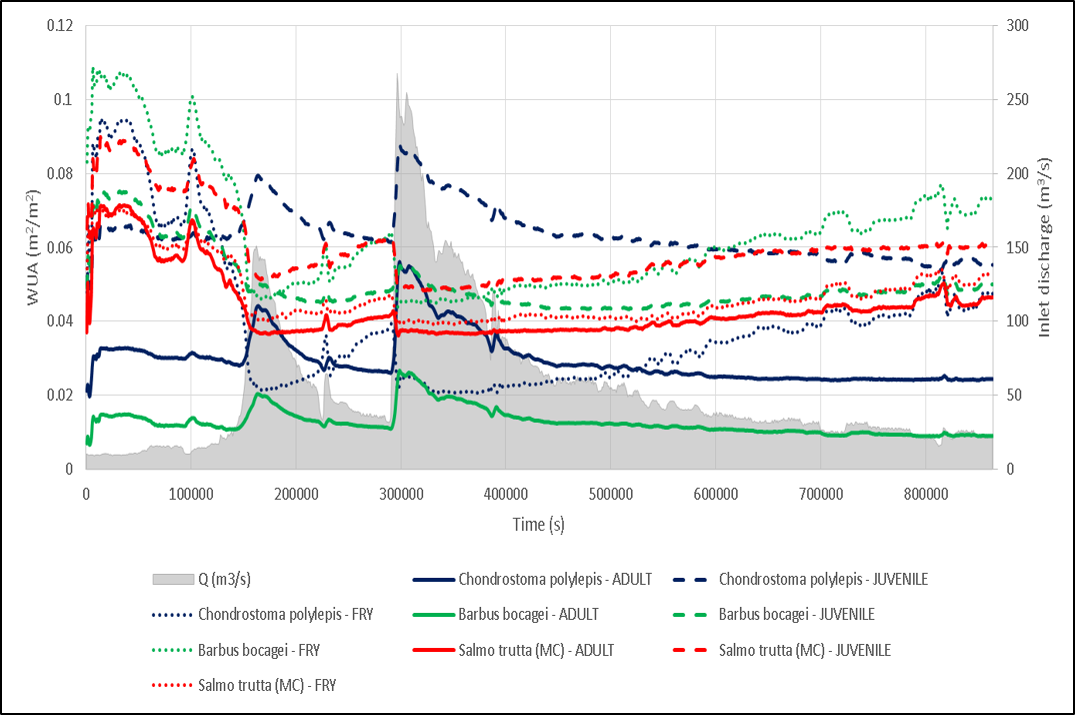
Soil Erosion
The soil erosion module of Iber quantifies the erosion of soils at the catchment scale, and evaluates the temporal and spatial evolution of the suspended solids concentration along the hillslopes and river network.
These features include:
- Fully distributed soil erosion module
- Manual/automatic assignation of soil properties
- Soil is computed as uniform or mixtures granulometry
- Computes bed and/or suspended sediment load
Through the personalized activation of different processes, it is possible to set up different levels of complexity. For instance, the use can define either a single vertical soil layer or two soil layers. Particles in both layers can be mobilized by the impact of rainfall or by bed friction. Once in motion, the soil particles can be transported either as bed load or as suspended load. Also, different types of particles (e.g. sediment classes) with different properties can be considered, thus allowing to work with distributed granulometries if necessary.
Related publications
- Cea, L., Legout, C., Grangeon, T., Nord, G., 2016. Impact of model simplifications on soil erosion predictions: application of the GLUE methodology to a distributed event-based model at the hillslope scale. Hydrol. Process. 30, 1096–1113. DOI: 10.1002/hyp.10697



Urban Drainage
The flow of water in urban areas presents considerable complexity compared to the flow in non-urban areas. Iber allows the evalation urban drainage problems considering rainfall-runoff and the flow propagation over streets and in the sewer network.
The main features include:
- Two calculations engines: Iber, as a fully integrated tool (hydrological processes and sewer network); and Iber-SWMM, and integration of Iber and SWMM
- Rainfall-runoff assessment in urban areas
- Sewer network integration with fully coupled flow (2D/1D and 1D/2D)
The capabilities of the hydrological process module are expanded to urban areas with the urban drainage module, both simulateing the whole process within Iber (rainfall-runoff process and sewer network) or using the coupled calculation engine between Iber (rainfall-runoff process) and SWMM (sewer network)
Related publications
- Sañudo, E., Cea, L., Puertas, J., 2020. Modelling Pluvial Flooding in Urban Areas Coupling the Models Iber and SWMM. Water, 12(9), 2647. DOI: 10.3390/w12092647

- Aranda J.Á., Sánchez-Juny M., Sanz-Ramos M., Beneyto C., 2023. Design of Drainage Downspouts Systems over a Road Embankment. Water 15:3529. DOI: 10.3390/w15203529



Wood transport
Large wood plays a vital role in river systems, shaping habitats and supporting biodiversity. Iber integrates a module for large-wood transport fully coupled with the hydrodynamics.
The main features include:
- Large-wood transport and interaction wood-wood
- Flow-wood-sediment-structures interaction
- Deterministic and stochastic approaches
- Definition of wood-based hydrographs and initial conditions for wood-logs
This calculation module is fully integrated into the Iber model. The module combines the Eulerian Iber 2D hydrodynamics with a Lagrangian model to simulate wood as dynamic elements. The model accounts for wood-flow-sediment, wood-wood, wood-infrastructure, and wood-terrain interactions, using two-way coupling. It has been validated with flume experiments and applied to various real rivers using field data. Applications include studying wood-sediment-flow dynamics and bridge-related wood accumulation. Though deterministic, it scenario testing and hypothesis exploration for complex wood dynamics.
Related publications
- Ruiz-Villanueva, V., Bladé, E., Sánchez-Juny, M., Marti-Cardona, B., Díez-Herrero, A., Bodoque, J.M., 2014. Two-dimensional numerical modeling of wood transport. J. Hydroinformatics 16, 1077. DOI: 10.2166/hydro.2014.026



Non-Newtonian flows
Non–Newtonian shallow flows are commonly produced in the natural environment. This module allows simulating the hydrodynamics of non-Newtonian shallow flows, such as debris flows, mud flows, dense snow avalanches, lahars, etc.
The main features include:
- Ad-hoc well balanced numerical scheme
- Hydrodynamics over complex geometries and steep slopes
- 8 rhological models (Manning, Dilatant, Viscous, Voellmy, Bartelt, Bingham, O'Brien-Julien, Herschel-Bulkley)
- Stop criterion based on the rheological model or the momentum
- Enrtrainment process during the dynamic phase
This calculation module is fully integrated into the Iber model. The module combines the Eulerian Iber 2D hydrodynamics with a Lagrangian model to simulate wood as dynamic elements. The model accounts for wood-flow-sediment, wood-wood, wood-infrastructure, and wood-terrain interactions, using two-way coupling. It has been validated with flume experiments and applied to various real rivers using field data. Applications include studying wood-sediment-flow dynamics and bridge-related wood accumulation. Though deterministic, it scenario testing and hypothesis exploration for complex wood dynamics.
Related publications
- Sanz-Ramos M., Bladé E., Oller P., Furdada G., 2023. Numerical modelling of dense snow avalanches with a well-balanced scheme based on the 2D shallow water equations. Journal of Glaciology, 2023, 1–17. DOI: 10.1017/jog.2023.48

- Sanz-Ramos M., Bladé E., Sánchez-Juny M., Dysarz T., 2024. Extension of Iber for simulating non–Newtonian shallow flows: mine-tailings spill propagation modelling. Water, 16(14), 2039. DOI: 10.3390/w16142039




